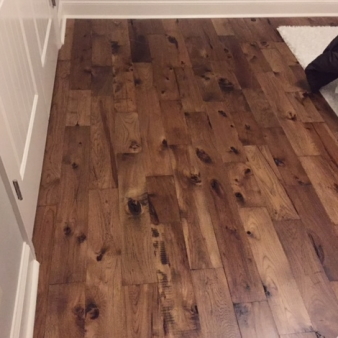Economy Flooring
 When trees are cut for wood flooring specifications, if boards are not selected out for different grading categories, but rather are left the way they are produced from the tree, then that is called Natural Grade flooring. It is the look that nature produced over time for that floor. Characteristics of this flooring include light and darker colors (the darker called “mineral streaks”) and knotting.
When trees are cut for wood flooring specifications, if boards are not selected out for different grading categories, but rather are left the way they are produced from the tree, then that is called Natural Grade flooring. It is the look that nature produced over time for that floor. Characteristics of this flooring include light and darker colors (the darker called “mineral streaks”) and knotting.
Wood flooring grades are Clear, Select, #1 Common, #2 Common, and #3 Common (also called Utility Grade). Sometimes flooring grades are also described as Character Grade or Natural Grade. Your best economy flooring is to be found in #2 Common and #3 Common.
#2 Common flooring allows for larger knots, more mineral streaking, and more grain variation. With an average board length of 26”, #2 Common flooring also tends to run in shorter lengths than higher grade floors.
#3 Common will see even shorter average lengths of 22”, with not many boards being longer than 50”. This grade will also contain split boards, boards that need to be cut off at the ends, and can also have broken tongue & grooves. As such, there is more labor involved in filling and finishing this flooring. This flooring is mostly to be found in Red Oak, White Oak, and Hickory.
Where a 2 ¼” #2 Common floor will cost around $2/sf, this same width will cost around $1.50/sf.
Just about all species of hardwoods offer Common and Rustic Grade flooring. Rustic Grade flooring is available in South American, European Oak, and North American wood species.
